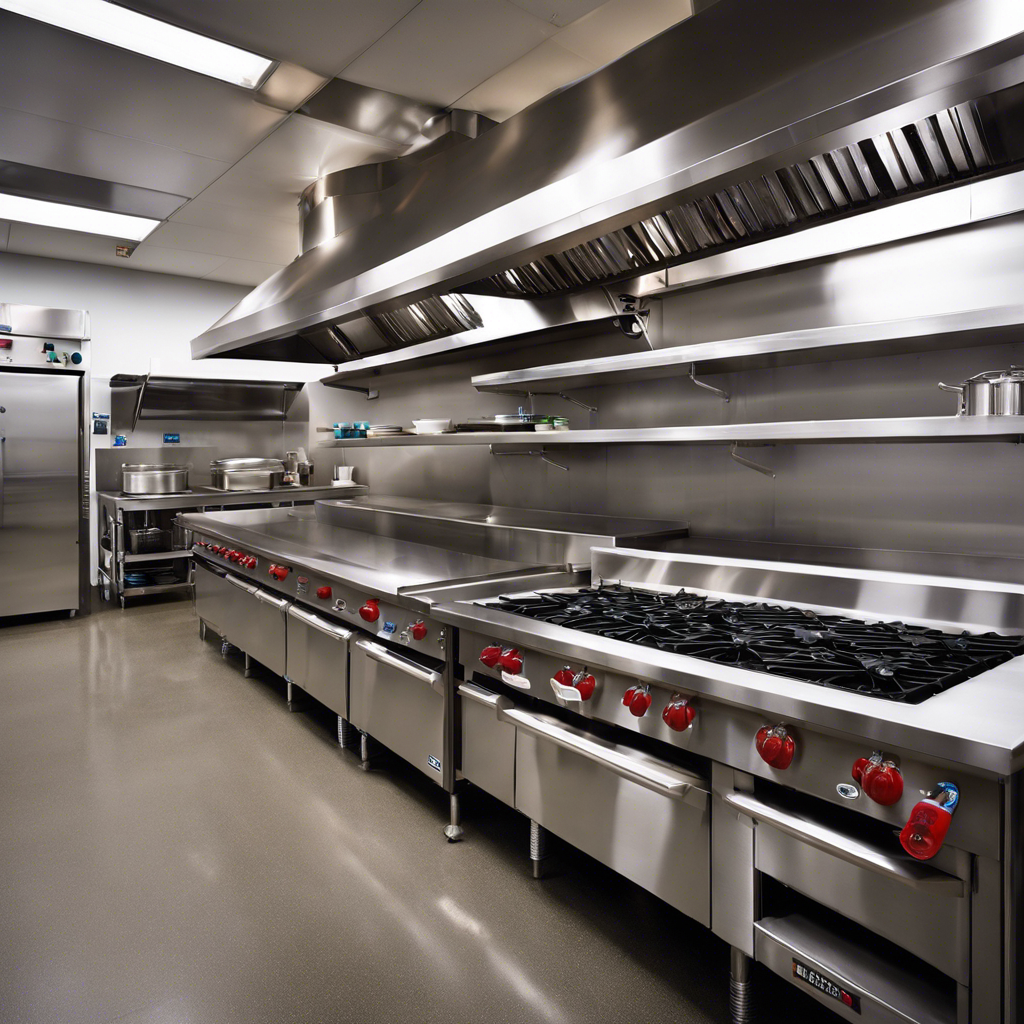Have you ever wondered how HVAC systems play a crucial role in ensuring food safety for Tulsa restaurants?
It is a commonly held belief that proper temperature control is essential for preserving the quality and safety of food. However, the truth is that HVAC goes beyond just maintaining temperature levels.
In fact, it plays a vital role in controlling humidity, air quality, and ventilation, all of which are crucial factors in preventing bacterial growth and contamination.
So, how exactly does HVAC ensure health and safety standards in the restaurant industry? Let’s explore further to uncover the hidden importance of HVAC systems in safeguarding the food we consume.
Key Takeaways
- HVAC systems play a crucial role in maintaining proper temperature and humidity levels to prevent bacterial growth and food spoilage.
- Clean air supply and proper ventilation provided by HVAC systems help prevent the spread of contaminants and ensure food freshness.
- Proper food storage and hygiene practices, along with regular inspections and employee training, are essential in preventing bacterial growth and contamination.
- Investing in energy-efficient HVAC systems and prioritizing equipment maintenance contribute to both food safety and cost effectiveness for Tulsa restaurants.
Importance of HVAC in Food Safety
The importance of HVAC in ensuring food safety can’t be overstated. Proper temperature control is crucial in preventing the growth of harmful bacteria and preserving the quality of food. HVAC systems play a vital role in maintaining the appropriate temperature in food storage areas, refrigerators, and freezers. Not only does this prevent food spoilage and contamination, but it also ensures that customers are served safe and fresh meals.
In addition to food safety, HVAC systems also contribute to energy efficiency and cost effectiveness. By using advanced technologies and efficient designs, these systems can help reduce energy consumption and minimize operating costs for restaurants. This not only benefits the environment but also allows businesses to save money in the long run.
Maintaining Temperature and Humidity Levels
After understanding the importance of HVAC in food safety, it’s crucial to now focus on maintaining the appropriate temperature and humidity levels in restaurant environments. Proper temperature and humidity control are essential in ensuring the safety and quality of food.
Maintaining temperature within the recommended range helps prevent the growth of bacteria and other microorganisms that can cause foodborne illnesses. Additionally, controlling humidity levels is important to prevent the formation of condensation, which can lead to the growth of mold and mildew.
To achieve optimal temperature and humidity levels, it’s important to prioritize energy efficiency and equipment maintenance. Regular maintenance of HVAC systems, including cleaning filters and checking for leaks, can ensure that the system operates efficiently and effectively, maintaining the desired temperature and humidity levels in the restaurant.
Controlling Air Quality and Ventilation
To ensure proper food safety, it’s crucial to effectively control air quality and ventilation in restaurant environments.
Maintaining a clean and healthy air supply is essential in preventing the spread of contaminants and ensuring the freshness of food. One way to achieve this is through the use of air filtration systems. These systems help remove dust, pollen, and other airborne particles that can compromise the quality of the air in the restaurant.
Additionally, proper ventilation plays a key role in controlling odors and maintaining a comfortable dining experience for customers. It’s important for restaurants to invest in energy-efficient HVAC systems that can effectively filter the air while minimizing energy consumption.
Preventing Bacterial Growth and Contamination
By implementing proper sanitation protocols and following strict food handling guidelines, you can effectively prevent bacterial growth and contamination in your restaurant.
One crucial aspect of preventing bacterial growth is proper food storage. Ensure that all perishable foods are stored at the correct temperature to inhibit bacterial growth. This includes refrigerating foods that need to be kept cold and freezing foods that need to be kept frozen. Regularly check the temperatures of your storage areas to ensure they’re within safe ranges.
Additionally, maintaining proper hygiene practices is essential. All staff members should regularly wash their hands with soap and warm water for at least 20 seconds. Encourage the use of gloves when handling food, especially when touching raw meats or other potentially contaminated ingredients.
Ensuring Health and Safety Standards
Maintaining health and safety standards is crucial for ensuring the well-being of both your customers and staff in your restaurant.
One of the key aspects of ensuring health and safety is providing proper employee training. Educating your staff about food handling practices, personal hygiene, and proper cleaning procedures can greatly reduce the risk of foodborne illnesses.
Regular inspections are also essential to ensure that your restaurant is meeting health and safety standards. These inspections can help identify potential hazards and ensure that proper protocols are in place to prevent any issues.
Frequently Asked Questions
How Often Should a Restaurant’s HVAC System Be Inspected and Maintained to Ensure Food Safety?
To ensure food safety, you should have your restaurant’s HVAC system inspected and maintained regularly. Regular inspections are important as they help identify any potential issues and ensure that the system is functioning properly.
What Specific Temperature and Humidity Levels Are Recommended for Food Storage and Preparation Areas?
To ensure food safety, it is important to maintain recommended temperature and humidity levels in food storage and preparation areas. Proper HVAC maintenance plays a crucial role in achieving these conditions.
Are There Any Regulations or Guidelines That Restaurants Must Follow Regarding Air Quality and Ventilation?
Restaurants must follow regulations on air quality in order to ensure food safety. Proper ventilation is crucial to maintain a clean and healthy environment for food preparation.
What Are Some Common Sources of Bacterial Growth and Contamination in Restaurant HVAC Systems?
Sources of bacterial growth and contamination in restaurant HVAC systems can include dirty filters, moisture buildup, and improperly cleaned ductwork. Regular maintenance, proper ventilation, and cleaning protocols can prevent these issues and ensure food safety.
Besides Temperature Control, What Other Features or Functions Should a Restaurant’s HVAC System Have to Ensure Health and Safety Standards Are Met?
To ensure health and safety standards, your restaurant’s HVAC system should have proper restaurant ventilation and effective air filtration. These features help remove contaminants and maintain clean air, reducing the risk of bacterial growth and ensuring food safety.


